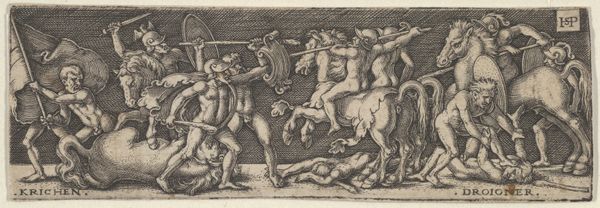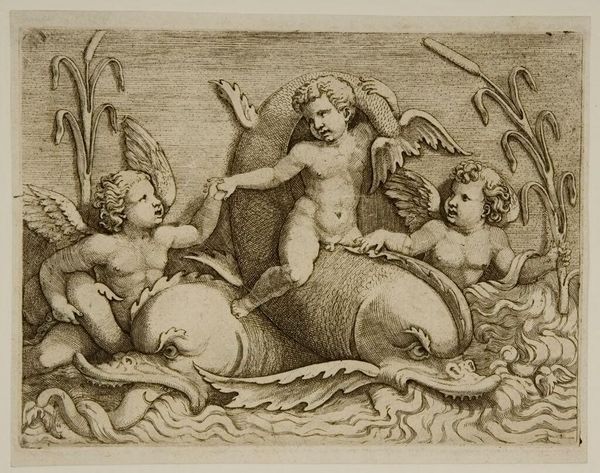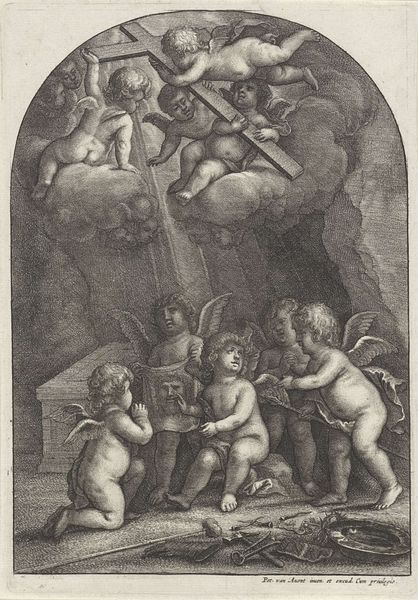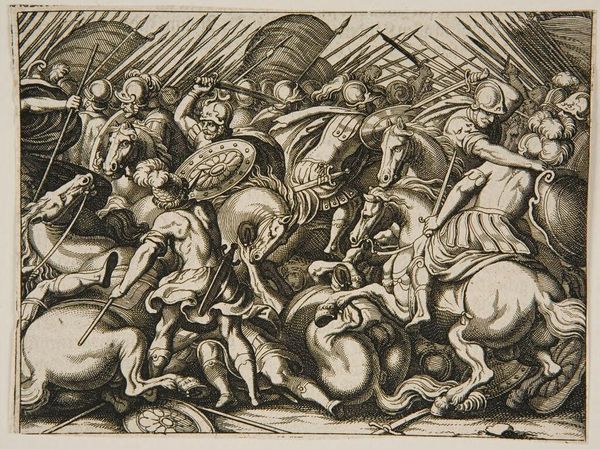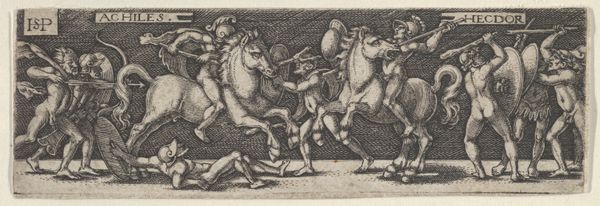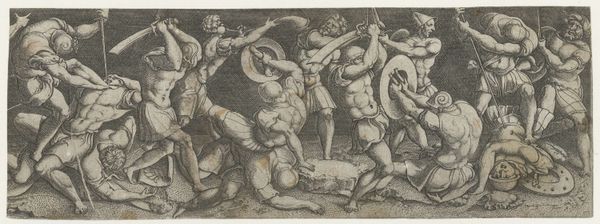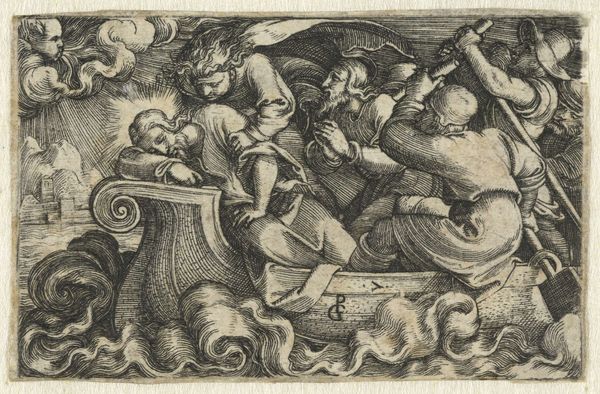
drawing, print, paper, engraving
#
drawing
# print
#
greek-and-roman-art
#
figuration
#
paper
#
history-painting
#
nude
#
engraving
Dimensions: 26 × 116 mm (image/plate); 25 × 114.5 mm (sheet)
Copyright: Public Domain
Editor: This is "The Abduction of Helen," a print drawing of Sebald Beham's. It appears to be an engraving on paper, undated, and teeming with frantic activity! It is very linear with hatching to convey tone, yet has an undeniable energy. How would you interpret this work, focusing perhaps on what meaning its images had for the people of its time? Curator: The beauty of the image lies in how Beham has tapped into the deep cultural memory of the Greeks and Romans, playing upon established visual shorthands for complex concepts. Consider the repetition of the nude male figure – he represents virility, action, and conquest, a loaded image in its time. It embodies idealized strength, yet placed within this narrative of abduction, does it signify glory, or something more unsettling? Editor: Unsettling, certainly. Helen doesn't seem to have much say in all this chaos! Is there something particular about how Beham chose to represent the female form? Curator: Exactly! Helen appears less individualized, more objectified amidst the frenzy. Beham seems less concerned with Helen as an individual woman and more interested in what she represents. She is a symbol of beauty, desire, and the catalyst for conflict. Think of the stories surrounding her – did she truly embody agency or did the men around her dictate her fate? Her presence then is a dangerous, and desired symbol for power in masculine contest. Editor: That's fascinating. The way the visual symbols intersect to create that ambiguity – it’s almost as if Beham is making us question the glorification of conflict itself. Curator: Precisely. By understanding the historical and cultural context of these symbols, we uncover layers of meaning that transcend mere aesthetic appreciation, creating conversation beyond the surface. Editor: Thank you. It's incredible to see how a single image can hold so much cultural weight. This work definitely makes you think! Curator: Indeed, art often asks us to revisit and reinterpret cultural memory. It remains powerfully resonant even now, does it not?
Comments
No comments
Be the first to comment and join the conversation on the ultimate creative platform.

